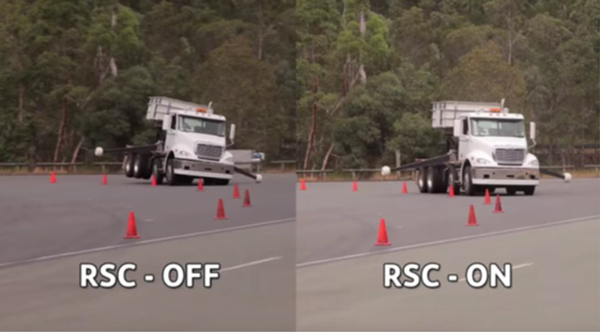Trucking body warns that operators should not tamper with electronic braking and safety systems
Truck owners are being warned to spare a thought for electronic braking and stability suppliers and not to muck around with the technologies.
This includes changing configurations, for example.
“We’re a market of fiddlers, we like playing with things, we like tampering, we all think we can do better,” says the Australian Trucking Association’s Chris Loose.
“But if there is an issue, go see an expert.”
The ATA’s senior engineering advisor was speaking at this year’s Comvec technical conference in Melbourne, organised by Heavy Vehicle Industry Australia.
It was in the context of a draft guide, yet to be released, on maximising the compatibility of braking and roll stability systems between trucks and trailers.
“This guide is only one level,” Loose says.
“The second level is where you need the Knorrs, the Wabcos, the Haldexes, the BPWs, and all those other guys to step up and look at the combinations.”
Loose also advises having patience with these electronic systems suppliers, because they have a tougher job in Australia than probably anywhere else in the developed world.
For one thing, the incompatibility problem is going to be around for many years to come because of the slow turnover in trucks and trailers.
“It’s not going to be easy to solve because our fleet age is getting older. It’s 11 ½ years for prime movers.”
As we constantly hear, Australia is a unique market, taking a mis-match of technologies from all over the place.
“We are going to have to build up an experience base that doesn’t exist anywhere else in the world,” says Loose.
“We have got trucks from Europe, we have got trucks from America, we have got trucks from Japan and we have got our own home grown stuff; and we’re doing combinations that are longer and heavier.
“Everything is going against them, and we are trying to do something fairly unique in this marketplace, so compatibility is not going to go away, and the guys on the ground servicing these units are going to struggle.
“They’re seeing stuff that is not being seen in Europe, they’re doing stuff that’s not being done in North America, so it’s not easy, so bear with them, help them, communicate with them.”
Wabco demonstrating the virtue of Roll Stability Control.
Have confidence
Despite the warning against tampering, Loose says most truck workshops are capable of routine servicing of electronic systems, with technology supplied by the OEMs (original equipment manufacturers).
“And the key thing with any of this technology is regular service,” he adds. “Seems simple, but it’s amazing the number of people that won’t actually go and check their wheel end sensors.
“In particular if you’re running off road, those sensors are one of the most exposed items on the vehicle, so they will get caught, sticks will hit them, the electrical lines will be crimped, all that sort of stuff will happen and they do need regular check-ups. So after a long trip, make sure the sensors are checked.
“This technology is great, but if you’re operating off road, if you’re operating remotely, you will have higher operating costs, there’s no doubt about it, but there are benefits too.”
Whether it’s foundation or electronic braking systems: “It seems obvious, but it doesn’t always happen, and that’s making sure that equivalent safety critical service parts are used, and this has happened time and time again, bottom line wins out.”
Check out much more on electronic braking technology in the next issue of ATN. Subscribe here.



